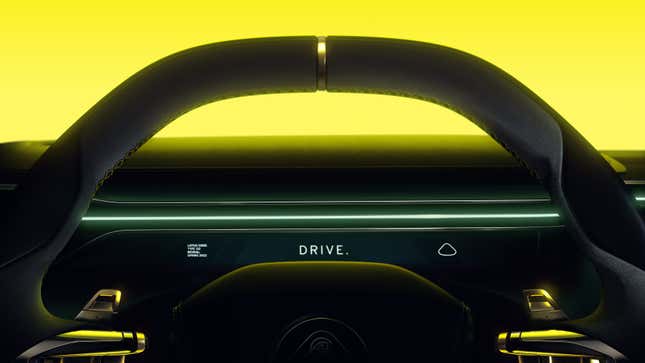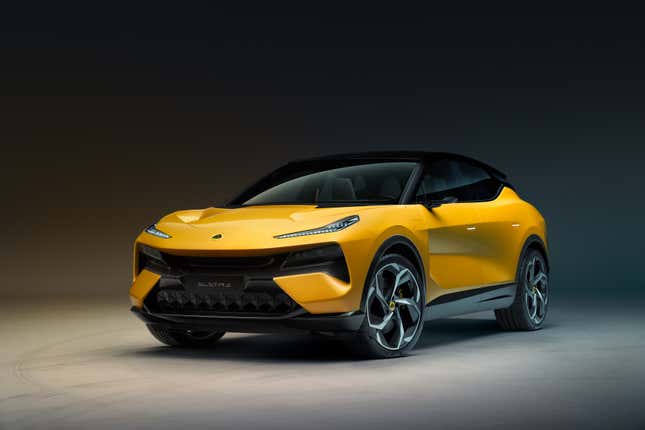Lotus Wants to Redefine SAE Autonomy Levels with the Lotus Eletre

The Lotus Eletre is set to introduce a series of firsts for the brand. Not only will the Eletre be the first-ever Lotus SUV, but it will also be its first-ever EV, as well its first autonomous vehicle. The Eletre is currently in use as an AV in China, where it’s close to achieving Level 3 autonomy, as Autocar reports. But Lotus is already looking ahead of that milestone, and it plans to reach Level 4 with the Eletre in the near future. In order to do that, however, Lotus says that our SAE autonomy levels should be redefined or reinterpreted.
Rainn Wilson is Tired of Tesla and its Yoke
In case you missed it:
Lotus Robotics CEO Li Bo says that classification of autonomy levels should take another metric in mind, which accounts for total distance traveled in between the car’s handing off operation back to its driver, per Autocar:
The Eletre is already close to being a true level three car, according to Li Bo, CEO of the Lotus Robotics division that heads the development of the autonomous systems, allowing prolonged ‘hands-off’ operation. But he also thinks that the SAE autonomy levels are too simplistic.
“A much better measurement is ‘mile per intervention’ – how far the car goes before the need for driver takeover,” he told journalists at Lotus’s flagship Shanghai showroom last week. The Eletre is already able to go 200km (124 miles) between interventions and that number is increasing with frequent updates. The ultimate ambition, according to Li, is to push it to 100,000km (62,150 miles) per intervention, which is effectively equivalent to level four operation.
The better metric Li refers to is “Mile[s] Per Intervention” or MPI for short. It isn’t exactly as simple as the Z-Rating we’ve proposed in the past — not unless your circadian rhythm is attuned to distance rather than time. But, at the very least, Li’s MPI standard is an uncomplicated way of redefining how we rate our robocars.
Li says that autonomy levels are too simplistic right now, but MPI sounds even simpler than the SAE’s classifications. You could argue MPI necessarily includes the conditions that must be met for any given AV level, because longer distances pose more challenges and more frequent risks on public (unpredictable) roads.
Photo: Lotus
The more advanced an AV becomes, the further it can go without needing to hand the wheel back to the driver. But, this redefinition is a bit self-serving on Lotus’ part because AV levels based on “distance traveled before intervention” could grant the Eletre Level 4 autonomy before some of its rivals. Well, if Lotus can get its EV SUV to travel more than 62,000 miles all on its own, anyway.
The Lotus Eletre could pull it off one day given its combination of advanced sensors: there’s short-range radar, multiple lidar sensors, as well as high-definition cameras and high-powered computers to make sense of all the input the Eletre relies on to navigate. Unlike some of its competitors, the Eletre will reportedly favor data from on-board sensors to drive itself, rather than rely on high-definition maps, which don’t always live up to their promise.
Still, 62,000 miles is well into a new car’s lifecycle for some owners. Imagine getting a new Lotus and not really having driven it by the time it was due for trade-in. That’s a giant leap forward for the future of robocars, but, a small step backward for people who love to drive their cars.

Photo: Lotus

Photo: Lotus



